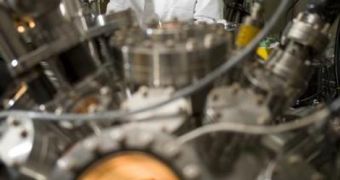Taking their inspiration from nuclear fusion research, scientists at the Purdue University (PU) are taking future computer chip production methods to new levels, through a new class of nanolithography processes. For it, the experts need extremely thin beams of plasma, which are also a necessity in obtaining nuclear fusion in most setups. While current photolitography processes use ultraviolet light to project the image of a mask onto a light-sensitive material, the new method would use the far more efficient extreme ultraviolet wavelengths, which are only 13.5 nanometers wide.
This means that computer chips subjected to the new technology would benefit from circuits and layouts that are approximately one-tenth the size of those on existing chips. The PU experts believe that the new method could also help the processor industry break the limitations of Moore's Law, which is now approaching its critical stage.
The unofficial law says that transistor numbers on processors double each 18 months, until the level of miniaturization becomes too complex to handle. This seems more and more to be the case now, as existing chip technologies have almost reached their full potential.
“We can't make devices much smaller using conventional lithography, so we have to find ways of creating beams having more narrow wavelengths,” the Head of the PU School of Nuclear Engineering, and the Paul L. Wattelet Professor of Nuclear Engineering, Ahmed Hassanein, explains. Scientists at the university are currently working with colleagues from the US Department of Energy's (DOE) Argonne National Laboratory (ANL) on assessing two methods of producing the required plasma – one relies on lasers, while the other is a “discharge-produced-type” method that uses an electric current.
“In either case, only about 1 to 2 percent of the energy spent is converted into plasma. That conversion efficiency means you'd need greater than 100 kilowatts of power for this lithography, which poses all sorts of engineering problems. We are involved in optimizing conversion efficiency – reducing the energy requirements – and solving various design problems for the next-generation lithography,” the expert adds.
High-energy interaction with general heterogeneous target systems, or HEIGHTS, is a computer simulation designed specifically to allow researchers to view the exact processes and phenomena that appear in materials before they turn into plasma. Such knowledge could benefit both lines of research in obtaining the most cost-effective method of producing the substance.

 14 DAY TRIAL //
14 DAY TRIAL //